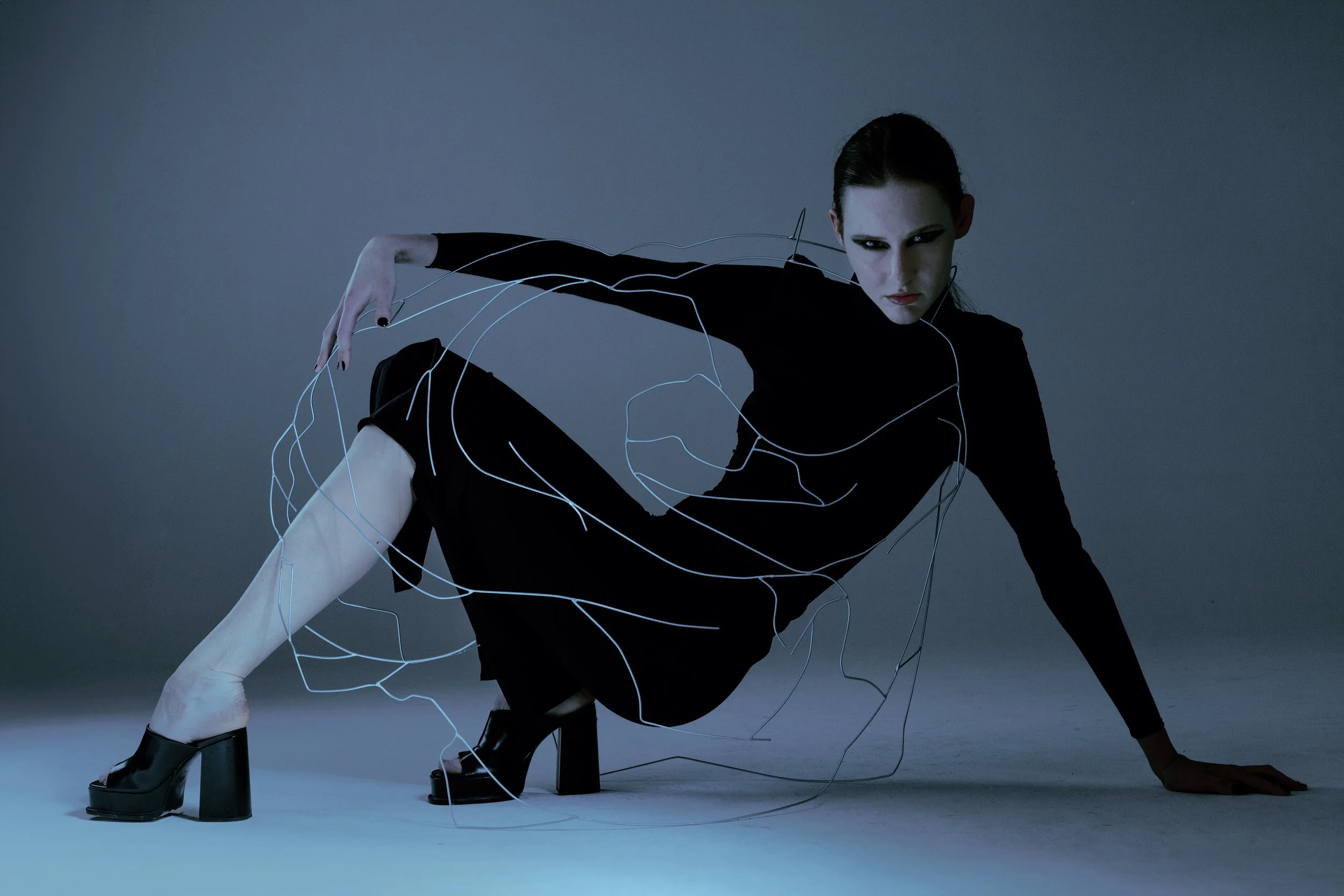Lenie Hanz - new face on the Prague fashion scene
In an interview with MAGPAPER, emerging fashion designer Lenie Hanz reflects on her first year after art school — a period marked by creative exploration, fashion shows, and bold collaborations that blur the lines between art, movement, and design. Her approach to fashion is deeply intuitive and conceptual, rooted in storytelling and transformation. Each garment she creates carries a narrative, a sense of motion, and an echo of the world that inspires her. For Lenie, this is only the beginning — a prelude to what’s next in her evolving creative journey.
1. How did you start your fashion designer journey? What was the decision point?
I've been interested in fashion since I was a child — I used to drape pieces of fabric on my friends, and we would put on our own fashion shows. However, the turning point came after I finished high school. I had studied scenography and exhibition design, which deeply influenced my perception of aesthetics and fashion. But it was during this time that I realized I was more drawn to fashion itself. I decided to pursue it full-time and enrolled in a university program focused purely on fashion design, where I had the space and opportunity to grow and develop in this field.
2. What is your design philosophy?
To create garments that go beyond wearability and tell their own story. They form a deeper connection between the garment (the material we wear) and the wearer. For me, clothing is not just about functionality — it’s a means of self-expression and a way of carrying one’s identity.
3. Which fashion era influences your art the most?
I'm not sure I would choose one specific fashion era, as the influences that shape my work tend to change over time. My creative process is quite dynamic and fluid. I often find inspiration in various areas that aren't limited to the fashion industry alone.
4. How does your process of creating pieces look like? Does it start with a fabric or maybe a story you want to tell?
In my work, I’m often inspired by the sensory impressions and objects that surround me. I frequently capture these impulses through photography and later transform them into concepts that evolve into final garments. These inspirations can come from fallen clothes on the street, movements in fabric, music — essentially anything that influences me in a particular moment. These visual records serve as the foundation for developing both the concept and the garment’s pattern. Through this process, I give each piece its own story and unique character. What fascinates me is the idea of taking something that already exists and reinterpreting it in a completely new form. I like to play with the transformation of objects — taking an existing 3D form, translating it into a 2D pattern through photography, and then reconstructing it back into a final 3D garment in an entirely new expression.
„For me, fashion is not only about what we wear — it’s a language of emotions and identity. Each piece carries its own rhythm, its own story waiting to be heard.“ Lenie Hanz
5. What was it like to start a fashion career in theCzech Republic?
I still feel like I'm at the beginning of my journey in fashion. This is my first year after art school.
6. Do you have any advice for designers starting their career in fashion?
Don’t be afraid of anything. Make mistakes and find your own path. Every beginning is challenging, but it's persistence, courage, and experience that shape your unique creative voice.
7. You've had quite a few fashion appearances and shows with your designs. Could you tell us about the one most important to you?
The most important presentation of my work so far was the performance Listen and Wear: The Sound of Motion, created in collaboration with the collective MUVA. It was an original project that connected fashion, music, and movement, set in the beautiful space of the Church of St. Salvator in Prague. For this event, I designed a collection tailored specifically to the space and to the music, which was developed as part of the concept in close collaboration with musical performers. The performance became a unique event blending elements of a fashion show, a concert, and a theatrical performance. This experience shifted the way I perceive fashion, its presentation, and its expressive potential — all thanks to the interdisciplinary connection between creative fields and the power of collaboration.
8. What makes this event/show the most significant to you?
What was most important to me in this project was the collaboration and the interdisciplinary connection between fashion and music. Through the creative process with musical performers, a cohesive whole was formed, in which clothing, music, and movement worked together in harmony. This cross-disciplinary dialogue opened up new possibilities for how to think about fashion design and its presentation as a form of artistic expression.
9. What is your take on the future of fashion?
I like how fashion changes every moment, and we never know what to expect in the future. I enjoy the fact that even something we wouldn’t anticipate can become an essential part of fashion. In the future, I see fashion as a freer form of self-expression.
10. And last but not least, what's next for you and your brand? Some projects or events you would like to share?
The past six months have been truly dynamic for me – from fashion shows to exhibitions and various artistic events. It’s been intense, inspiring, and it has pushed me forward once again. But this is definitely not the end – quite the opposite. The next project I’m currently working on is a collaboration with the MUVA collective. Together, we’re preparing another interdisciplinary project. We want to show that fashion can cross boundaries.



